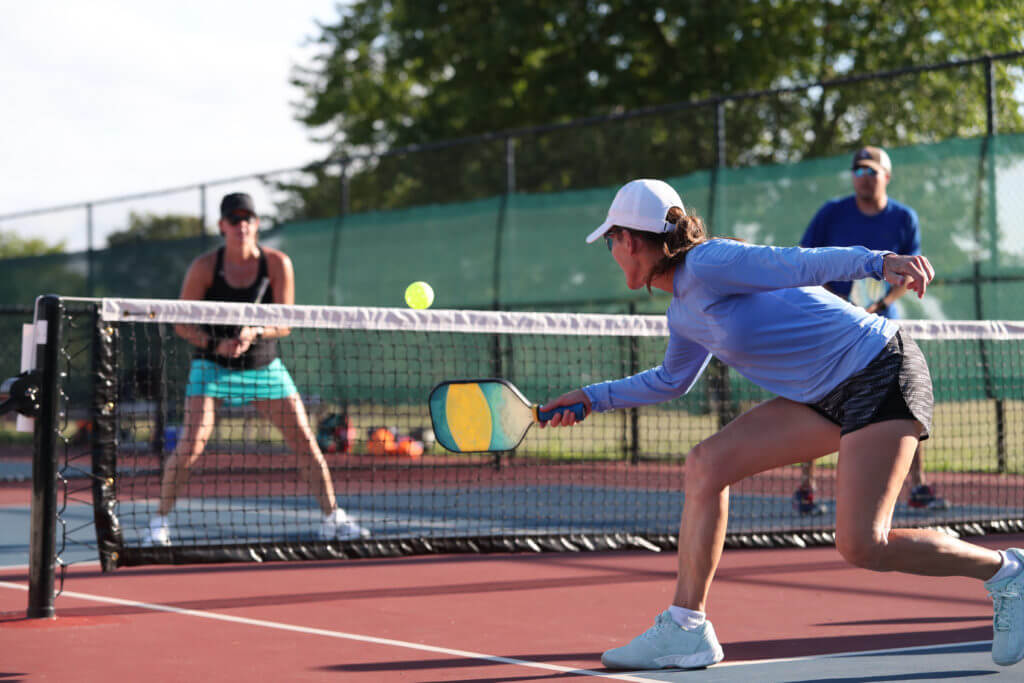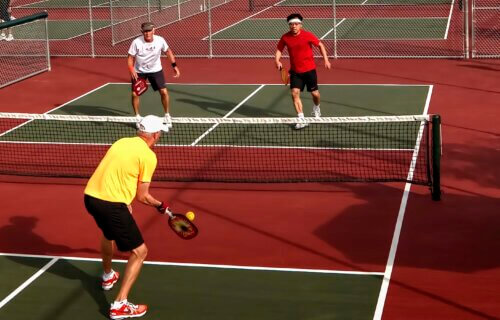RALEIGH, N.C. — Getting enough exercise on a regular basis can often feel like just another chore on the to-do list, but staying physically active doesn’t have to be a drag — even among older adults. Researchers from North Carolina State University found that a small group of older individuals (age 65 and older) were able to reach their recommended weekly dose of moderate-to-vigorous physical activity by playing pickleball.
So, what is pickleball? It’s a racket/paddle sport where either two or four players hit a hollow plastic ball over a 36-inch-high net using solid-faced paddles. Players often say it’s a cross between tennis and ping-pong. Fun, and easy-to-play, researchers believe pickleball is a great activity for older adults looking to engage in more light physical activity.
“We know it’s an enjoyable activity, but what we didn’t know was: Are older adult participants getting enough moderate to high intensity activity to reach the level critical for cardiovascular health?” asks the study’s lead author Jonathan Casper, associate professor of parks, recreation and tourism management at NC State. “This pilot study provides objective data to support that pickleball participation is an activity that promotes older adults’ physical activity and helps participants meet CDC and U.S. Department of Health and Human Services recommendations.”
Pickleball helps players get their daily steps in
Study authors tracked the physical activity habits of 33 older adults who played pickleball at least two times weekly. The team tracked each person’s steps and intensity of physical activity during a two-week period using Fitbits. Participants averaged 3,477 more steps on the days they played pickleball, and also tended to spend more time engaged in either “very active” or “fairly active” physical activity. During each pickleball session, players averaged more than 68 minutes of moderate-to-vigorous physical activity. Additionally, they averaged 86.77 minutes in three increased heart rate zones during an average session.

“There are three important factors for successful healthy aging,” Prof. Casper explains in a university release. “No. 1 is physical health, and staying not just physically active, but engaging in physical activity where your heart rate is raised, which is called moderate to vigorous physical activity. There is also a social component, which is maintaining and creating social connections, and psychological health, or a feeling of well-being and life satisfaction.”
Both the CDC and U.S. Department of Health and Human Services recommend older adults get somewhere between 150 and 300 minutes of moderate-intensity activity or 75 and 150 minutes of vigorous-intensity activity on a weekly basis. During this study, playing pickleball was the sole reason most participants met those exercise guidelines.

“We were able to isolate their pickleball activity versus everyday activity, and our key finding was that pickleball was the sole reason most participants were able to meet CDC standards,” Prof. Casper adds. “Pickleball participation was what helped them reach that threshold.”
Moving forward, researchers plan to compare pickleball with other sports commonly played by older adults to form a clearer understanding of differences in physical activity, social-psychological benefits, and injury risk.
The study is published in Recreational Sports Journal.
You might also be interested in:
- Want to play pickleball? Here’s where the popular sport is growing the most
- Best Of The Best Pickleball Paddles For 2023: Top 5 Choices Most Recommended By Experts
- Pickleball’s uphill climb to mainstream success in the U.S.

